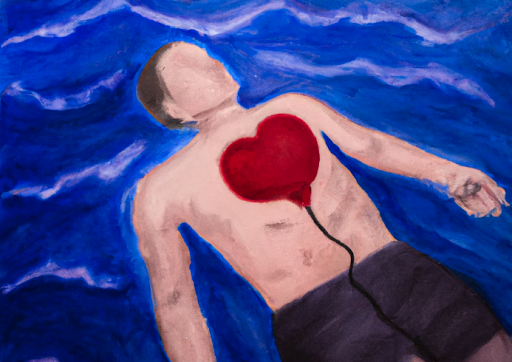Touch, sight, smell, hearing, and taste are what most people immediately think of when asked about the human senses. While these five major senses get the most attention, there are numerous, often-overlooked senses of the body that can add a great depth of information about what is going on inside of us: for example thermoception (sense of temperature), nociception (sense of pain), and equilibrioception (sense of balance). One of these lesser known senses is interoception, or the sense of the sensations inside your own body, like your heartbeat and your breathing. “It’s like an inner selfie,” Dr. Sahib Khalsa, floatation researcher, says in his 2016 Float Conference talk.
Interoception can be compared to other forms of bodily sensations such as exteroception, which deals with sensations outside the body through stimulation of the five major senses, and proprioception,which deals with your spatial awareness. Together, these senses work to help the brain determine the answer to “how do you feel?” Through knowing where you are spatially, what is in your immediate environment, as well as what is going on in your body, you can identify how you feel, and what you need to do to correct anything that feels off. When one of these pathways for sensing our inner and outer worlds isn’t functioning properly, it can become challenging to articulate our feelings and emotions.
Research has shown a link between how we regulate our emotions and our level of interoceptive awareness; a lower ability to recognize what is going on inside our bodies leads to a more difficult time working out our emotions, which in turn can make us more anxious. Interoception has been shown to be a basis for our emotional regulation – if you know what is going on inside, you’ll likely be more in tune with your emotional states.
There is an evolutionary explanation for this, the more connected our ancestors were to their bodies, the more quickly they could act to solve a problem. Were they hungry and needed food? Or cold and needed shelter? Being able to decipher these messages sent to the brain in a fast and efficient way allowed ancient humans a better chance at survival.
The disconnect between what the body is feeling and what the brain is perceiving can slow us down, causing us to have trouble acting on our internal feelings, often bringing out feelings of distress and anxiety. Not knowing how to describe what you’re feeling leads to confusion as we are lost in describing what we feel. Previous research has shown that floating can increase the awareness of inner bodily sensations, especially when in the tank, when a beating heart suddenly becomes more prominent in the otherwise empty environment. That feeling of body-connectivity can carry on outside of the tank as well. This has led to current research looking at how floating can be used to help people with anxiety who struggle to connect their inner sensations to the proper emotions.
Anxiety Sensitivity (AS) is described as the fear that one will experience anxiety symptoms and sensations, specifically ones arising from inside the body, and is an underlying contributor to many forms of chronic anxiety. AS can be a large factor in anxiety levels for someone in their day-to-day life, and can have a variety of effects ranging from impacting how their immune system is functioning to being a cause of random panic attacks. Is it possible that getting people with high AS and low interoception into a float tank could help them get more in tune with their bodies through the reduction of all the outside stimulation? Dr. Justin Feinstein and Dr. Sahib Khalsa set out to answer that in a 2017 study.
The study took individuals with high AS and other forms of anxiety and looked at how floating might be beneficial for interoception compared to another relaxing treatment (watching a nature documentary). After floating (compared to the documentary) participants reported lower states of anxiety, while also having reduced blood pressure and muscle tension. Participants who floated also had an increase of sensations from the cardiorespiratory system – their breath and heartbeat became easy to focus on with all other stimulation swept away. Interestingly, participants found it easier to detect their heartbeat all throughout their body, including areas on the face, head, and on the back.The ability to regulate their focus on internal bodily sensations was also increased. The findings indicated that floating helped these participants see a reduction of general anxiety as well as increased interoception, specifically through the heartbeat and the breath.
Many anxiety disorders stem from a disconnect between the mind and body, lowering levels of interoception. This disconnect can cause other forms of anxiety, as emotions can feel out of sync, leading to internal confusion. Having a higher interception allows for someone to be more attentive to their emotions, as they can process internal stimulation quicker and more accurately gauge how they are feeling. While more work needs to be done, the results are promising, and early studies show that floating could be beneficial to increasing interoception, specifically within highly anxious individuals. There appears to be a strong connection between floating and heightened recognition of the heartbeat and breathing, making you more in tune with your body, and fostering a better understanding of the connection between your physical and mental states.



Recent Comments